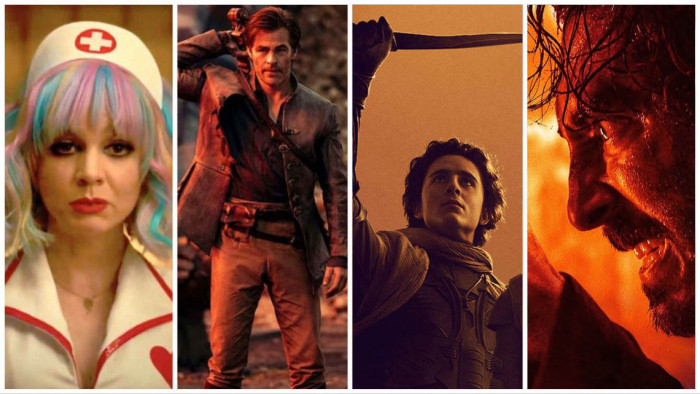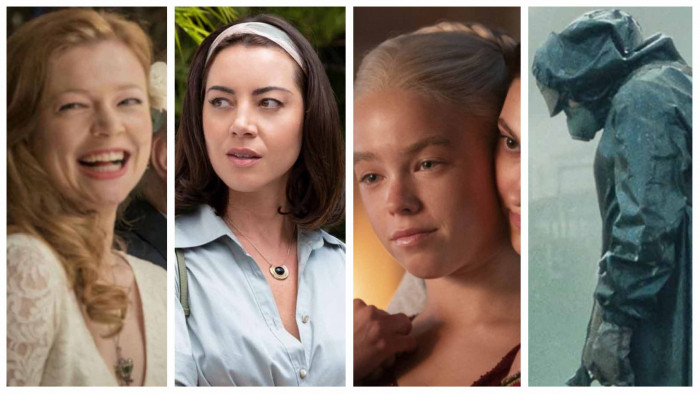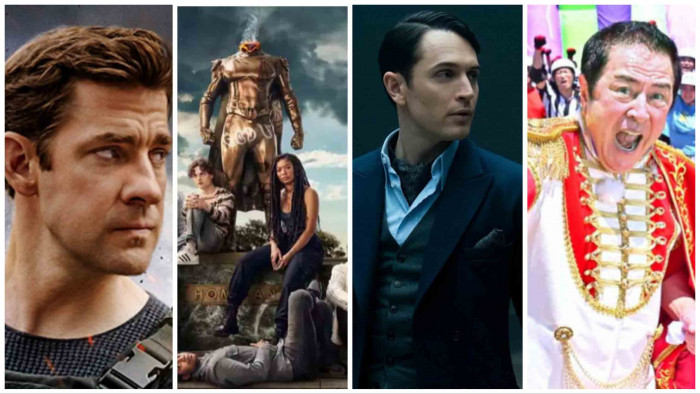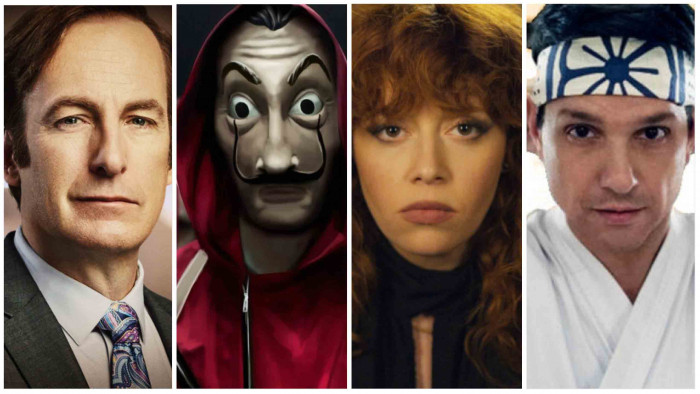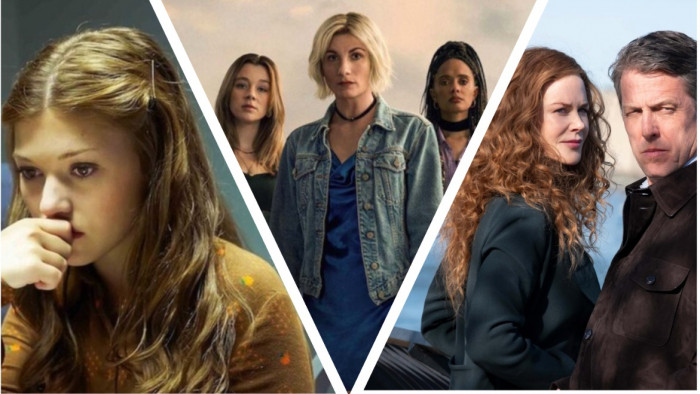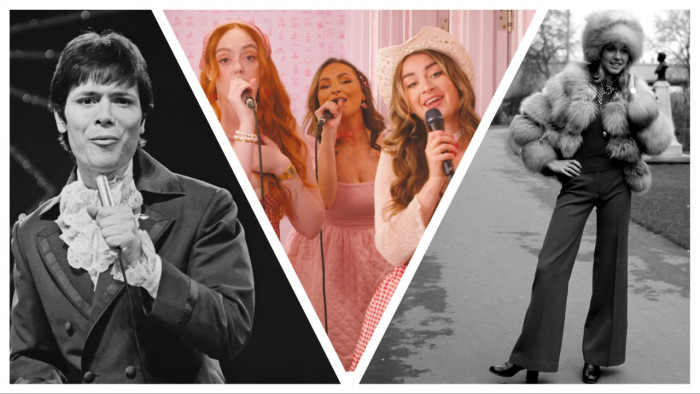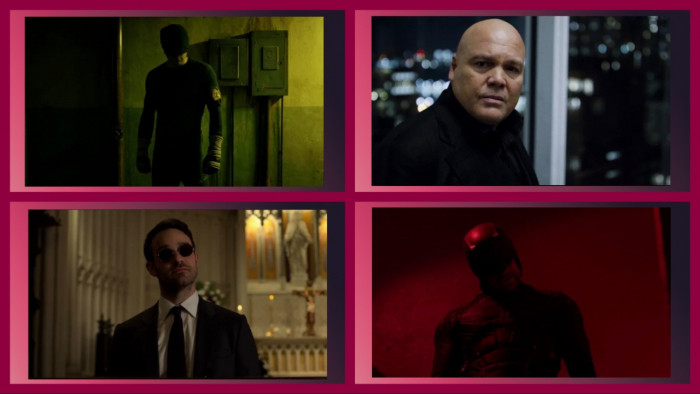There are longer-running sitcoms, more universally beloved sitcoms and certainly more consistent sitcoms, but is there a more British sitcom than Red Dwarf? It was never intended as such, but the bumbling adventures of four(ish) misfits in far-future distant space embodies that most British of qualities - doing our best while being a little bit crap, and not really minding that much. It’s the greatest celebration of the underdog ever televised.
The premise of the show is reasonably straightforward: a slobby chicken soup vending machine repairman wakes up in the distant future to find himself the last human alive. He’s joined only by a human-like creature descended from his cat, and a hologram of his bunkmate and arch-nemesis. There’s more to it (they’re all on board the titular spaceship, a mining vessel that has been travelling away from Earth for three million years), but the crux of it is an odd-couple sitcom that happens to be in deep space, in which everyone uses the disgusting made-up swearword ‘smeg’. It’s funny.
Creators Rob Grant and Doug Naylor had worked on Spitting Image and Radio 4 comedy, and spent five years trying to convince the BBC to make their script against the corporation’s frequent insistence that nobody would watch a sci-fi sitcom.
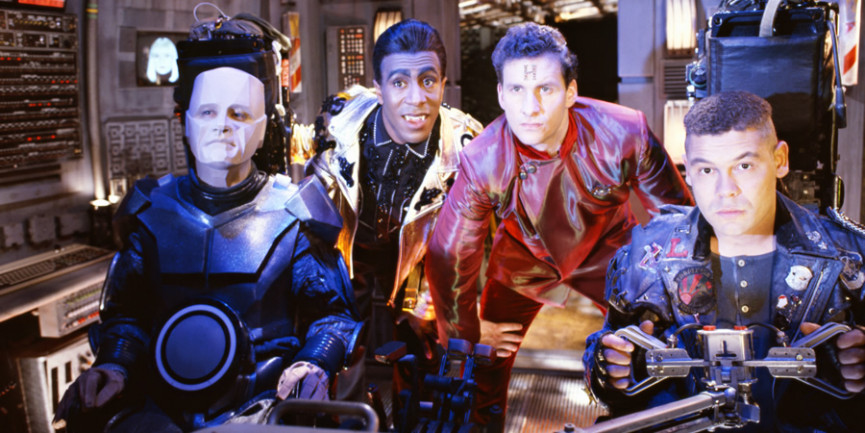
Every character on Red Dwarf is a misfit from the get-go: Lister and the Cat are the sole surviving members of their species, and Rimmer is dead (and was a failure when alive). The cast were similarly non-legit, without a ‘proper’ actor among them. Craig Charles was a punk poet, Chris Barrie an impressionist who’d done voices on Spitting Image, and Danny John-Jules was a dancer. The diversity of career backgrounds was reflected in an on-screen diversity - not a lot of BBC shows in the late ‘80s featured a black man, a white man and a mixed-race man in their lead roles. Norman Lovett, who portrayed the ship’s computer Holly, was a stand-up comic, and was initially only going to do a voice-over - he had to really push to be seen on screen. The cast were later joined by Robert Llewellyn, who was a cartoonist, as the mechanoid Kryten. Not an actor to be seen.
(All men though. Women aren’t treated amazingly in Red Dwarf, with only one female character ever making multiple appearances, and even then, changing actresses. Claire Grogan and later Chloe Annett played Kristine Kochanski, whose character was rewritten multiple times depending on whether the story was best serviced by her being an unrequited crush, ex-girlfriend or love interest of Lister. To be fair though, the dynamic of the show all but required the main characters to all be the same sex, and an attempted US remake with a female Cat played by Terry Farrell failed to capture any of the magic of the original. Holly changed sex from male to female in series three to five, but that doesn’t properly count - Hattie Hayridge was playing the same character as Norman Lovett and, as an AI, Holly wasn’t actually female, actually, actually.)
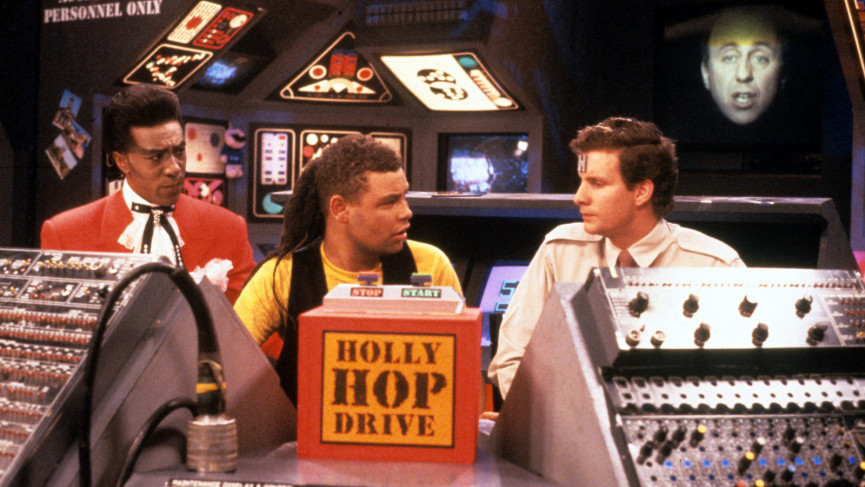
For a long time, sci-fi was synonymous with Star Trek, a pristine vision of a utopian future with shiny walls, high-tech doors, form-fitting uniforms and heroic captains with great jawlines. Red Dwarf understood that even in a high-tech future, things would break down and someone would still have to fix the chicken soup vending machines. Very little of the technology on the show works. Holly, the ship’s computer, has gone senile from spending three million years alone. The artificially intelligent toaster has a bad attitude. Kryten, the mechanoid, is neurotic and guilt-ridden.
Red Dwarf understands that there will always be laziness, slobbiness and dickheads. That even in the future, some people won’t always remember to change their pants. You never saw anyone holding a mop in Star Trek, or smashing a can on their head, or accidentally hitting themselves in the groin with a bat, or eating a curry. Red Dwarf is full of curry. It’s all over Lister’s clothes. It’s delicious.
The underdog spirit, part by design and part by budgetary necessity, was reflected in the whole aesthetic of the show. The walls are grey and utilitarian-looking, the living quarters stark and prisonlike. The characters inhabit a future that more resembles a run-down office building floating through space than Star Trek’s perfect bridge or the elegant neon cyberpunk dystopia of Blade Runner.
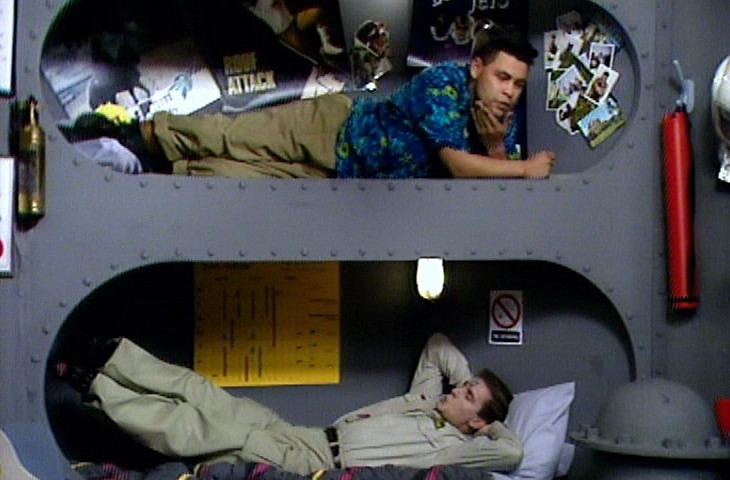
Special effects at the beginning of the series were limited to cheaply-done miniatures, occasional split-screen shots and rubber monsters. The skutters, little working robots that roamed the corridors of the ship, were made from shoeboxes and the engines from remote control cars, but would go haywire when a local taxi company’s radios interfered with them, one of them slamming into Chris Barrie’s crotch while shooting.
That wasn’t the only problem plaguing the production. One character in the pilot episode was meant to be Australian to push the idea of the ship as an international endeavour, but the actor involved couldn’t do the right accent, so the character became Welsh. Also, several takes from the shoot had to be discarded because Craig Charles’ penis and testicles were hanging out of the leg of his boxer shorts. That never happened on Star Trek.
To give an extreme example of the contrast between the two shows, here’s how Captain Kirk himself, William Shatner, describes doing stunts on set:
“I did a lot of stunts. You do it if your face is there, but you let the stuntman take the hard fall, because if I was to really hurt myself the whole production would come to an end.”
Craig Charles, meanwhile, summed his approach to stunts as: “I’m a Scouser, so I can be dropped on my head with no problems”.
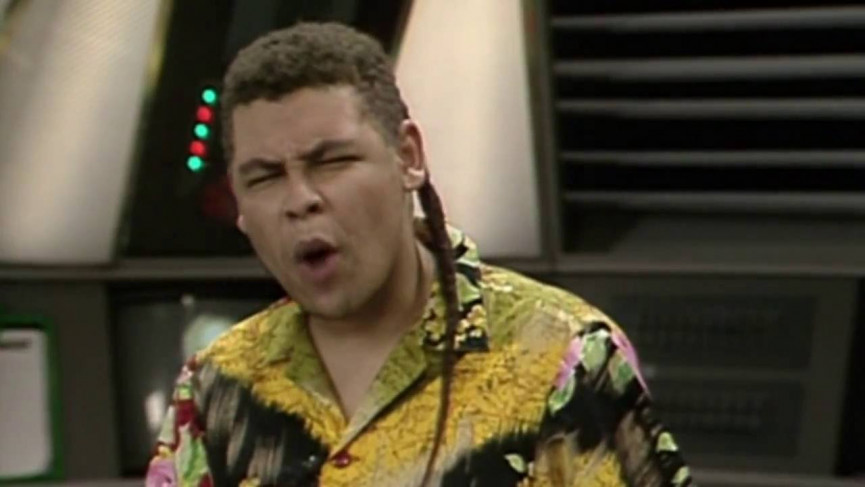
“In the early days there was a lot of vitriol from the sci-fi press, who didn’t like the first two series,” co-creator Doug Naylor later said, but gradually the show found an audience, becoming first a cult hit - including sci-fi royalty Terry Pratchett, Patrick Stewart and Stephen Hawking among its fans - then a bona-fide phenomenon. At one point it got eight million viewers on BBC Two, a record for a comedy programme. The series six episode Gunmen of the Apocalypse won the show an International Emmy. American remakes and big-screen outings were planned.
Perhaps appropriately for such an underdog-centric show, success brought a drop in quality. The writing partnership of Rob Grant and Doug Naylor split up, Grant citing his desire to have “more on his tombstone than Red Dwarf”. High ratings led to an increased budget for series seven and eight, which included more expensive special effects and a more film-like feel, trading the live studio audience for a single-camera setup. Fans felt let down, the chemistry between the cast was affected, and a huge chunk of the show’s charm was lost. ‘Remastered’ versions of the earlier series were broadcast to mark the show’s tenth anniversary, replacing low-budget special effects with 1998’s finest-quality CGI in a bid to boost international sales, which left viewers cold.
After a bloated, expensive, underwhelming eighth series, it seemed it was all over for the boys from the Dwarf.
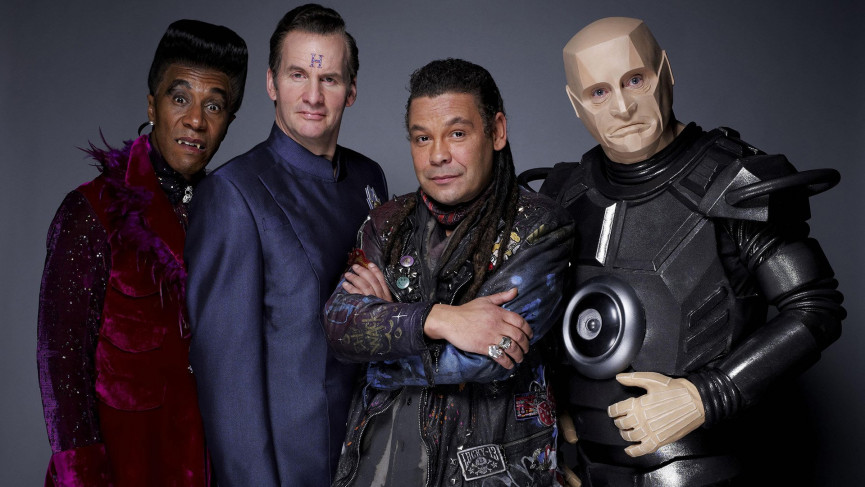
The world of sci-fi has changed since then and become much more mainstream. Futurama, Battlestar Galactica, Westworld, the whole Marvel Cinematic Universe - it’s no longer just something for Forbidden Planet-visiting ne’er-do-wells. Shows like Rick and Morty get loads of praise for sneaking highbrow sci-fi concepts in under the jokes, but Red Dwarf’s been doing that since the beginning. It just hasn’t gone on about it. Ideas like suspended animation, sentient holograms, alternate dimensions, genetically-engineered life forms, the inescapable nature of causality and the ethics of artificial intelligence were all dealt with hilariously. A generation of nerds owe their knowledge of the failed assassination of Hitler, the actual assassination of John F. Kennedy, the concept of Ouroboros, the serving temperature of gazpacho soup, J. Edgar Hoover’s cross-dressing and lots more to Red Dwarf. You know Altered Carbon, Netflix’s sexy new sci-fi show where people’s consciousness can be electronically stored then housed in new bodies? Red Dwarf did it first, and did it funnily, with Lister’s consciousness getting stored on tape then immediately dropped into a cup of tea.
Interestingly, some aspects of Red Dwarf’s future might be more realistic than we think, despite being played for laughs. Tech industry operations specialist Mat is a huge Red Dwarf fan who made a replica of the ship in his metalwork class at school. “There are theories about how post-Singularity AI, rather than being hostile or vengeful towards humans, might just completely disregard us and struggle to see any value in our existence beyond being atoms,” he says. “I like the idea of Holly as an example of an AI that’s so indifferent to human existence that it’s largely useless at keeping humans safe or alive.”
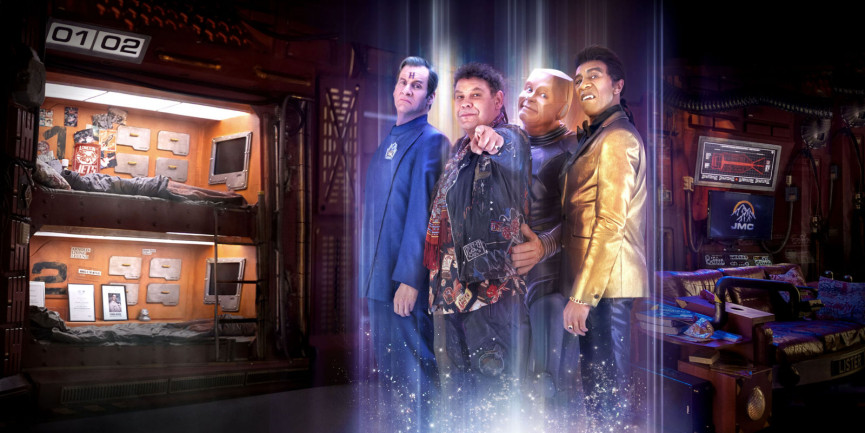
A ten-year hiatus took Red Dwarf back to its roots - a lower-budget 2009 comeback on Dave took it off the mainstream BBC and into Freeview territory, the dreams of a big-screen, big-money outing lying in forgotten tatters. After a miniseries, Dave has broadcast two full series of the show, with more on the way. Remarkably, these have included some of the most creatively ambitious episodes of the whole run.
It’s an underdog again. Everyone involved has had a few projects fall by the wayside in the interim, maybe had a legal problem or two, and has another decade under their belts. And their belts are bigger - two of the main four characters are an android and a hologram, neither of which are capable of ageing, yet both Chris Barrie and Robert Llewellyn look old and pudgy. But it doesn’t matter. Lister and the Cat are now in their 50s, which gives all their adventures an extra veneer of bleakness - a 25-year-old getting hit in the groin is funny, while a 50-year-old getting hit in the groin is tragic, but again, it doesn’t matter. Everyone’s there, happy to be involved.
And, isn’t that us? Isn’t that Britain in general? A bit shit, but doing our best and happy to be involved? Put Star Trek: Discovery on on Netflix and you see America - shiny, telegenic, optimistic. But flip back to Dave and Red Dwarf and you’ve got Britain, a bunch of people slightly past their prime, having fun, taking the piss out of each other, eating curry, being smegheads.


